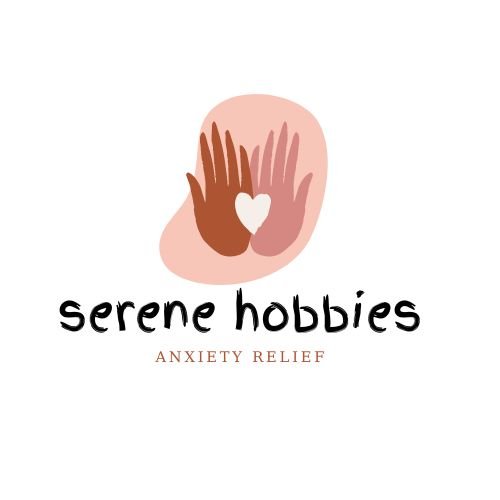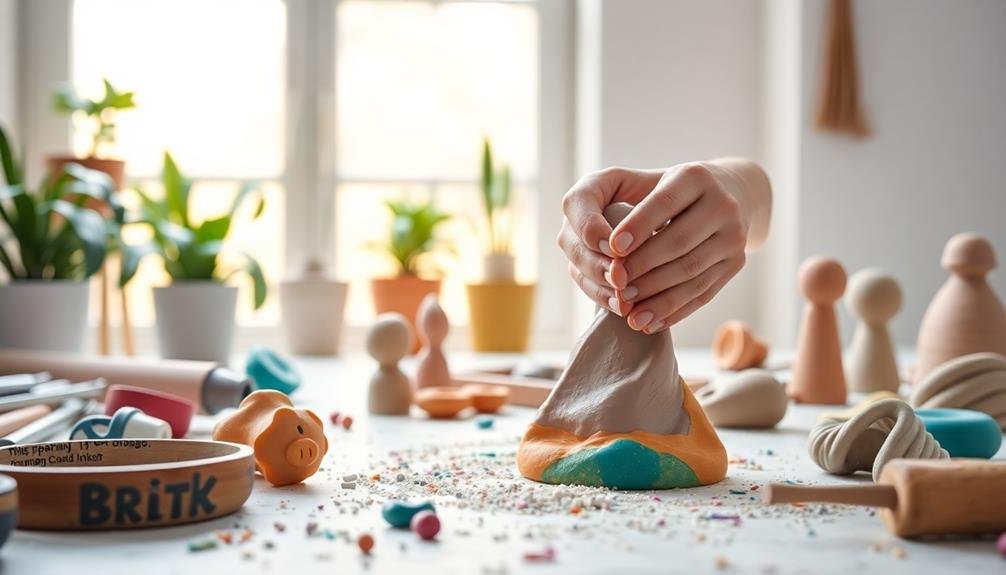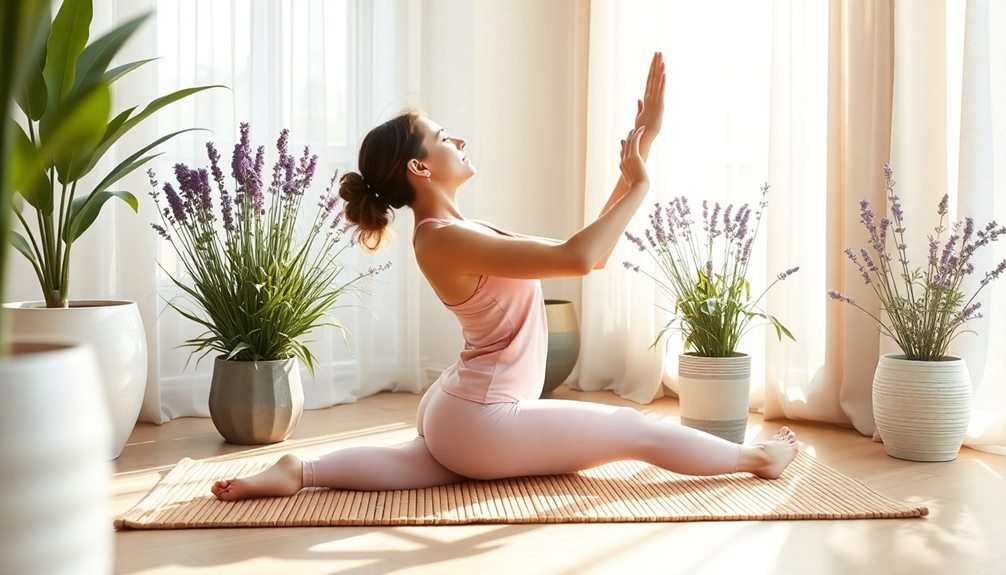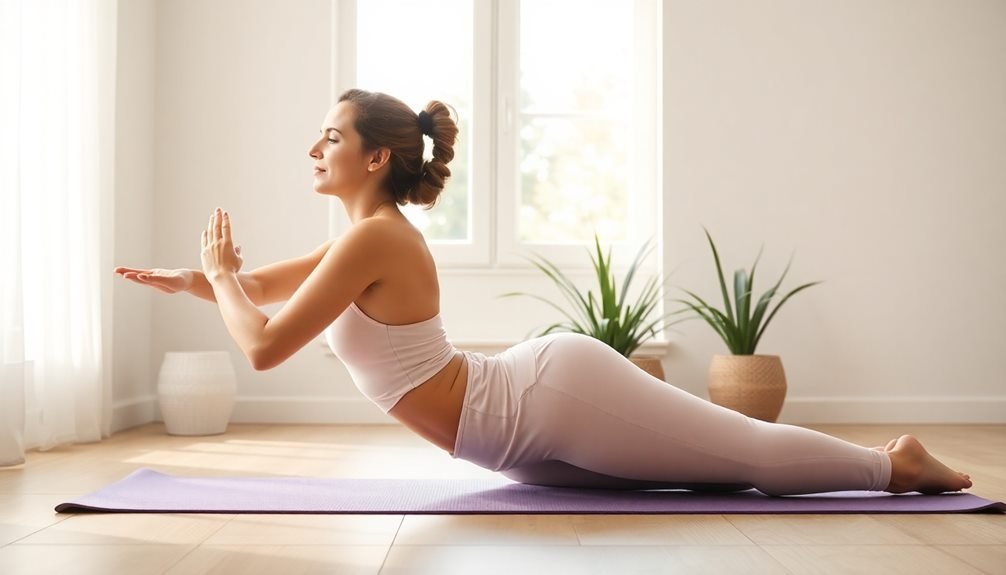Clay art offers a powerful, hands-on approach to managing anxiety and reducing stress. As you engage with the malleable material, you'll ground yourself in the present moment, activating multiple senses and promoting relaxation. Choose from various clay types, like beginner-friendly polymer clay or traditional earthenware, to suit your needs. Set up a calm workspace and explore basic techniques like pinching, coiling, and slab building. Incorporate mindful practices, breathing exercises, and color therapy to enhance the therapeutic benefits. Embrace imperfections in your creations and use guided imagery to express your inner landscape. By sculpting away stress, you'll uncover a world of creative healing possibilities.
Understanding Clay's Therapeutic Properties

For centuries, clay has been recognized for its therapeutic qualities. When you work with clay, you're engaging in a tactile experience that can help ground you in the present moment. The malleable nature of clay allows you to physically manipulate and shape it, providing a sense of control that can be calming for those struggling with anxiety.
Clay's sensory properties stimulate multiple senses simultaneously. As you touch and mold the clay, you're activating your sense of touch. The earthy scent engages your olfactory system, while the visual transformation of the clay appeals to your sight. This multi-sensory engagement can help distract your mind from anxious thoughts and promote relaxation.
Working with clay also encourages mindfulness and focus. As you concentrate on creating, you're less likely to dwell on worries or negative thoughts. The repetitive motions involved in clay work, such as kneading or coiling, can have a meditative effect, helping to slow your breathing and heart rate.
Additionally, clay's forgiving nature allows for experimentation without fear of failure, promoting self-expression and boosting confidence. This can be particularly beneficial for those whose anxiety stems from perfectionism or fear of judgment.
Choosing the Right Clay
When diving into clay art for anxiety relief, selecting the right type of clay is essential. You'll want to take into account factors like texture, plasticity, and drying time.
Polymer clay is an excellent choice for beginners, as it's easy to work with and doesn't require firing. It comes in various colors and remains pliable until baked in a home oven.
Air-dry clay is another user-friendly option that doesn't need firing. It's ideal if you're looking for a quick, mess-free experience. However, it can crack if not properly handled.
Earthenware clay is perfect if you're seeking a more traditional approach. It's soft, smooth, and great for hand-building techniques. Keep in mind that it requires firing in a kiln.
For those who want a more challenging material, stoneware clay offers durability and versatility. It's suitable for both hand-building and wheel throwing.
Porcelain clay, while delicate and demanding, provides a beautiful, translucent finish that's worth the extra effort if you're up for the challenge.
Setting Up Your Sculpting Space

To create a calming clay art environment, you'll want to choose a quiet area free from distractions.
Gather essential sculpting tools like cutting wires, shaping tools, and smoothing sponges before you begin.
Organize your workspace with separate areas for clean materials, works-in-progress, and finished pieces to maintain a sense of order and focus.
Choose a Quiet Area
As you begin your clay art journey to manage anxiety, selecting a quiet area for your sculpting space is crucial. Choose a spot where you can work undisturbed, allowing your mind to focus solely on the clay in your hands. This dedicated space will become your sanctuary, a place where you can escape the stresses of daily life and immerse yourself in creativity.
When choosing your quiet area, consider the following factors:
- Noise level: Opt for a location away from high-traffic areas, televisions, or other sources of distraction.
- Natural light: If possible, select a space with ample natural light to enhance your mood and improve visibility.
- Ventilation: Guarantee proper air circulation, especially if you'll be working with glazes or firing clay.
- Accessibility: Choose an area that's easily accessible, so you're more likely to use it regularly.
Once you've identified your ideal spot, set up a comfortable workspace with all the necessary tools and materials within reach.
Keep your area clean and organized to minimize stress and maximize creativity. By creating a tranquil environment for your clay art practice, you'll be better equipped to focus on the therapeutic benefits of sculpting and find relief from anxiety.
Gather Essential Sculpting Tools
The right tools can make a world of difference in your clay art journey. To get started, you'll need a few essential items. First, invest in a good set of clay sculpting tools. These typically include wire tools, loop tools, and wooden modeling tools. They'll help you shape, smooth, and add texture to your clay creations.
Don't forget a sturdy work surface. A ceramic bat or wooden board works well, providing a stable base for your projects. You'll also need a spray bottle to keep your clay moist and pliable as you work. A set of scoring tools is vital for joining clay pieces together securely.
For trimming and cutting, grab a few pottery needles and a fettling knife. These will help you achieve clean edges and precise details. Consider getting some texture mats or stamps to add interesting patterns to your clay surfaces.
Lastly, don't overlook the importance of proper storage. Airtight containers or plastic bags will keep your clay fresh between sessions.
With these tools at your fingertips, you'll be well-equipped to immerse yourself in your stress-relieving clay art practice.
Organize Your Workspace
Now that you've gathered your tools, it's time to create an inviting and functional workspace for your clay art practice. Choose a well-lit area with ample space for your materials and projects. Consider setting up near a window for natural light, but avoid direct sunlight that could dry out your clay too quickly.
Make certain you have a sturdy table or workbench that's comfortable to sit or stand at for extended periods. Cover your work surface with a smooth, non-porous material like a plastic sheet or canvas drop cloth. This will protect your table and make cleanup easier.
Arrange your tools within easy reach, using containers or organizers to keep everything tidy and accessible. Don't forget to set up a water source nearby for wetting and smoothing your clay.
To optimize your sculpting space, follow these tips:
- Create designated areas for clean and messy tasks
- Use vertical storage solutions to maximize space
- Install good task lighting to reduce eye strain
- Set up a drying area for finished pieces
Basic Clay Handling Techniques
Several fundamental techniques form the foundation of clay handling, essential for anyone starting their clay art journey.
Begin by wedging your clay, a process that removes air bubbles and creates a uniform consistency. Knead the clay on a clean surface, using the heel of your hand to push it forward and fold it back repeatedly.
Next, learn to center the clay on a pottery wheel. Place a ball of clay in the middle of the wheel and, as it spins, use your hands to guide it into a symmetrical cone shape. Once centered, you can open the clay by pressing your thumb into the center and slowly pulling outward to create a basic vessel shape.
For hand-building techniques, start with pinch pots. Take a ball of clay and use your thumb to create a hollow, then pinch and rotate to form a small bowl.
Coil building involves rolling clay into long snakes and stacking them to build walls.
Slab building uses flat pieces of clay, rolled out with a rolling pin, which you can cut and join to create various forms.
Mindful Pinching and Coiling

Building on these fundamental techniques, mindful pinching and coiling offer a meditative approach to clay art that can considerably reduce anxiety. As you pinch and coil, focus on the sensations in your fingertips and the rhythmic movements of your hands. This mindful practice allows you to stay present in the moment, letting go of worries and stress.
To practice mindful pinching, start with a small ball of clay. Gently press your thumb into the center, slowly rotating the clay as you pinch and thin the walls. Pay attention to the clay's texture and temperature as it responds to your touch.
For coiling, roll out thin ropes of clay and carefully stack them, smoothing the joints as you build upward.
Here are four benefits of mindful pinching and coiling:
- Promotes deep concentration and focus
- Encourages slow, deliberate movements that calm the mind
- Provides a tactile experience that grounds you in the present
- Allows for creative expression without the pressure of perfection
As you engage in these techniques, remember that the process is more important than the end result. Let your mind wander freely while your hands work, embracing the therapeutic nature of clay art.
Grounding Through Slab Building
Slab building offers a powerful way to ground yourself through clay art.
You'll start by flattening and centering your clay, mirroring the process of calming your mind and body.
As you build stable foundations and methodically layer your emotions into the structure, you're creating a tangible representation of your inner stability.
Flatten and Center Yourself
Clay slab building can help you get grounded when anxiety strikes. This technique involves rolling out clay into flat sheets, which you can then manipulate into various forms. As you work with the clay, focus on the physical sensations and the present moment. The process of flattening and shaping the clay mirrors the act of calming and centering yourself.
To practice slab building for anxiety relief:
- Roll out a clay slab using a rolling pin or slab roller
- Cut the slab into geometric shapes using clay tools
- Stack and join the shapes to create a simple structure
- Smooth the joints and add texture with your fingers
As you flatten the clay, imagine you're flattening your worries. The repetitive motion of rolling and smoothing can be meditative, helping to quiet your mind.
When you cut and arrange the shapes, you're bringing order to chaos, just as you're seeking to organize your thoughts.
Build Stable Foundations
Stability forms the cornerstone of managing anxiety, and slab building techniques offer a tangible way to create this foundation. As you work with clay slabs, you're physically constructing a stable base, mirroring the process of building emotional stability. Start by rolling out an even clay slab, focusing on creating a smooth, consistent surface. This act of leveling represents smoothing out life's ups and downs.
Next, cut your slab into shapes that resonate with you. These pieces will form the walls of your structure. As you join them, concentrate on creating strong connections, symbolizing the importance of building robust support systems in your life. Use scoring and slipping techniques to guarantee these joints are secure.
Here's a quick guide to slab building techniques and their emotional parallels:
| Technique | Physical Action | Emotional Parallel | Anxiety Management | Grounding Effect |
|---|---|---|---|---|
| Rolling | Flattening clay | Smoothing rough patches | Reducing overwhelming feelings | Creating a level base |
| Cutting | Shaping boundaries | Setting healthy limits | Defining personal space | Establishing clear edges |
| Joining | Connecting pieces | Building relationships | Strengthening support | Unifying fragmented parts |
| Scoring and slipping | Preparing surfaces | Improving communication | Enhancing connections | Guaranteeing lasting bonds |
| Drying | Allowing stability | Patience in healing | Embracing gradual change | Solidifying progress |
Layer Emotions Methodically
Through methodical layering, slab building offers a powerful way to process and ground your emotions. As you work with clay slabs, you're creating a tangible representation of your feelings, allowing you to explore and understand them better.
Start by rolling out a slab for your base, symbolizing your foundation. Then, gradually add layers, each representing a different emotion or aspect of your anxiety.
As you build up your piece, focus on the following steps:
- Roll out slabs of varying thicknesses to represent different emotional intensities.
- Cut shapes that resonate with specific feelings or experiences.
- Texture each layer to add depth and complexity to your emotional landscape.
- Join the layers carefully, smoothing edges to create a cohesive whole.
This process encourages mindfulness and helps you visualize your emotional state.
You'll find that as you methodically construct your piece, you're also building a clearer understanding of your anxiety. The act of layering allows you to address each emotion individually while seeing how they interconnect.
Expressive Sculpting for Emotional Release

Expressive sculpting offers a powerful outlet for emotional release when working with clay. As you engage with the material, allow your emotions to guide your hands. Don't worry about creating a specific shape or form; instead, focus on translating your feelings into physical movements.
Start by kneading the clay vigorously, channeling any pent-up frustration or anger. Punch, squeeze, or twist the clay to release tension. If you're feeling sad or overwhelmed, try creating smooth, flowing forms that represent a sense of calm.
For anxiety, consider building intricate textures that mirror your racing thoughts, then smoothing them out as you work through your worries.
You can also assign emotions to different colors of clay and blend them together, representing how your feelings interact. As you sculpt, pay attention to how your body feels and how your emotions shift.
Don't judge your creation; the process itself is what matters. When you're finished, take a moment to reflect on your sculpture and the emotions it represents. You may choose to keep it as a reminder of your journey or reshape it for your next session.
Creating Anxiety-Relieving Textures
When working with clay, creating anxiety-relieving textures can be a soothing and meditative process. As you explore different techniques, you'll discover that certain textures can help calm your mind and reduce stress.
Focus on repetitive patterns and gentle movements to create surfaces that are both visually and tactilely appealing.
Try these anxiety-relieving texture techniques:
- Smooth rolling: Use a rolling pin to create a flat, smooth surface. The rhythmic motion can be calming.
- Finger impressions: Gently press your fingertips into the clay, creating a series of small indentations. This repetitive action can be grounding.
- Comb textures: Drag a plastic comb or fork across the clay surface to create parallel lines. The consistent pattern can be soothing.
- Circular imprints: Use various round objects to press circles into the clay. The repetitive nature of this technique can help quiet racing thoughts.
As you work, pay attention to how each texture feels beneath your fingers. Notice the way the clay responds to your touch and how the repetitive motions affect your breathing and muscle tension.
You'll likely find that certain textures resonate with you more than others, providing a sense of calm and focus.
Incorporating Breathing Exercises

Breathing exercises can greatly enhance your clay art experience, complementing the tactile sensations of texture creation. As you work with clay, incorporate deep breathing techniques to further reduce anxiety and promote relaxation.
Start by focusing on your breath, inhaling deeply through your nose for a count of four, holding for two, and exhaling slowly through your mouth for six counts.
While kneading clay, synchronize your breath with the rhythmic motions of your hands. Inhale as you press the clay, and exhale as you release. This practice helps you stay present and mindful throughout the creative process.
When shaping or sculpting, use your breath to guide your movements. Take a deep breath before making precise cuts or adding intricate details, allowing the exhale to steady your hands.
For more meditative clay work, try alternate nostril breathing. Close one nostril with your finger, inhale through the open nostril, then switch and exhale through the other.
Repeat this pattern as you smoothen clay surfaces or add textures, fostering a sense of balance and calm in your art practice.
Color Therapy in Clay Art
As you explore color therapy in clay art, you'll discover powerful emotional associations with different hues.
You can harness these connections by intentionally choosing colors that evoke calm, joy, or other desired feelings.
Try blending various shades of clay to create a personalized palette that resonates with your emotional needs and supports your anxiety management goals.
Emotional Color Associations
Colors often play an essential role in clay art therapy, tapping into our emotional responses and psychological states. As you work with clay, consider how different hues might influence your mood and creative expression.
Warm colors like red, orange, and yellow can evoke feelings of energy, passion, and optimism. In contrast, cool colors such as blue, green, and purple often promote calmness, serenity, and introspection.
When choosing colors for your clay art, reflect on your current emotional state and the feelings you'd like to cultivate. You might find that certain shades resonate more strongly with you on different days. Experiment with various color combinations to discover what works best for your anxiety management.
Here are four common emotional associations with colors in clay art therapy:
- Red: Strength, confidence, and motivation
- Blue: Tranquility, clarity, and emotional healing
- Green: Growth, balance, and harmony
- Yellow: Cheerfulness, creativity, and mental stimulation
Chromatic Clay Blending
Chromatic clay blending offers a powerful avenue for exploring color therapy in clay art. This technique allows you to mix and merge different colored clays, creating a visual representation of your emotions. As you work, you'll find that the process of blending colors can be both meditative and revealing.
Start by selecting clay colors that resonate with your current emotional state. You might choose cool blues for calmness, vibrant yellows for positivity, or deep purples for introspection. As you knead and blend these colors, pay attention to how the changing hues reflect shifts in your mood.
Don't be afraid to experiment with unexpected color combinations. The act of merging contrasting colors can symbolize the integration of conflicting emotions, helping you process complex feelings. As you work, focus on the sensory experience of the clay's texture and the visual transformation of colors.
You can create marbled effects, gradients, or even abstract patterns. The resulting piece will serve as a tangible representation of your emotional journey, providing a sense of accomplishment and a visual reminder of your ability to navigate and blend different emotional states.
Embracing Imperfections in Your Work

Perfection can be the enemy of creativity in clay art. When you're working with clay to reduce anxiety, it's essential to embrace imperfections in your work.
These so-called flaws often add character and uniqueness to your pieces, making them more personal and meaningful. By accepting imperfections, you'll find that your creative process becomes more relaxed and enjoyable.
Remember that clay art is about expression, not precision. As you work, focus on the therapeutic aspects of molding and shaping the clay rather than achieving a flawless result.
Allow yourself to experiment and make mistakes – they're often the source of unexpected beauty and innovation in your work.
Here are four ways to embrace imperfections in your clay art:
- Celebrate asymmetry in your designs
- Incorporate fingerprints and tool marks into the texture
- Explore organic, free-form shapes rather than perfect geometric ones
- Use glazes that create unpredictable effects during firing
Guided Imagery Sculpting Sessions
Guided imagery sculpting sessions offer a powerful way to blend mindfulness with clay art. In these sessions, you'll close your eyes and visualize a calming scene or emotion while your hands work the clay. As you listen to a soothing voice guiding your imagination, you'll translate your mental images into tangible forms.
Start by choosing a quiet space and gathering your clay materials. Sit comfortably and follow the guided imagery prompts, allowing your mind to create vivid mental pictures. As you immerse yourself in the visualization, let your hands mold the clay intuitively.
Don't worry about perfection; focus on expressing your inner landscape through the medium. You might sculpt a serene beach scene, complete with waves and shells, or create an abstract representation of peace and tranquility.
The process helps you externalize your thoughts and emotions, providing a physical outlet for anxiety. As you work, you'll find that the repetitive motions of kneading and shaping the clay become meditative, further reducing stress.
These sessions can be done alone or in groups, offering a unique way to combine relaxation techniques with creative expression.
Displaying and Reflecting on Creations

Showcasing your clay creations marks an important step in the anxiety-reducing process. It's not just about the act of creating; it's also about acknowledging and appreciating your work.
Find a special place in your home to display your sculptures, whether it's a dedicated shelf, a windowsill, or even your work desk. This visual reminder of your artistic journey can serve as a powerful tool for self-reflection and stress relief.
Take time to observe your creations regularly. You'll often find that each piece tells a story or represents a particular emotional state. This reflection can help you:
- Identify patterns in your thoughts and feelings
- Recognize progress in your anxiety management
- Gain insights into your subconscious mind
- Develop a sense of accomplishment and self-worth
Don't be afraid to share your art with others. Explaining your work can be therapeutic and may help you process your emotions further.
Frequently Asked Questions
Can Clay Art Therapy Be Effective for Children With Anxiety Disorders?
Yes, clay art therapy can be effective for children with anxiety disorders. You'll find it helps them express emotions, reduce stress, and build confidence. It's a tactile, engaging process that can calm their minds and improve focus.
Are There Any Potential Allergens or Skin Irritants in Clay Materials?
Yes, clay can contain allergens and irritants. You'll want to be cautious of dust, mold, and certain additives. If you've got sensitive skin or allergies, wear gloves and work in a well-ventilated area to stay safe.
How Long Does It Typically Take to See Benefits From Clay Therapy?
You'll often notice benefits from clay therapy within a few sessions. However, it's a personal journey. You might feel relaxed immediately, but deeper emotional and mental improvements can take weeks or months of regular practice.
Can Clay Art Techniques Be Combined With Other Forms of Anxiety Treatment?
Yes, you can combine clay art techniques with other anxiety treatments. They're often integrated into art therapy sessions, mindfulness practices, and cognitive-behavioral therapy. You'll find they complement traditional methods, enhancing your overall approach to managing anxiety.
Are There Online Resources or Virtual Classes Available for Clay Art Therapy?
You'll find numerous online resources and virtual classes for clay art therapy. Explore platforms like Skillshare, Udemy, or YouTube for tutorials. Many therapists and art centers also offer remote sessions tailored to anxiety management through clay work.
In Summary
You've now explored the calming world of clay art for anxiety relief. Remember, it's not about perfection but the process. As you sculpt, pinch, and mold, you're also shaping a calmer state of mind. Don't hesitate to experiment with colors and techniques that resonate with you. Keep your creations as reminders of your journey. With practice, you'll find clay work becomes a go-to method for stress relief and self-expression.





Leave a Reply